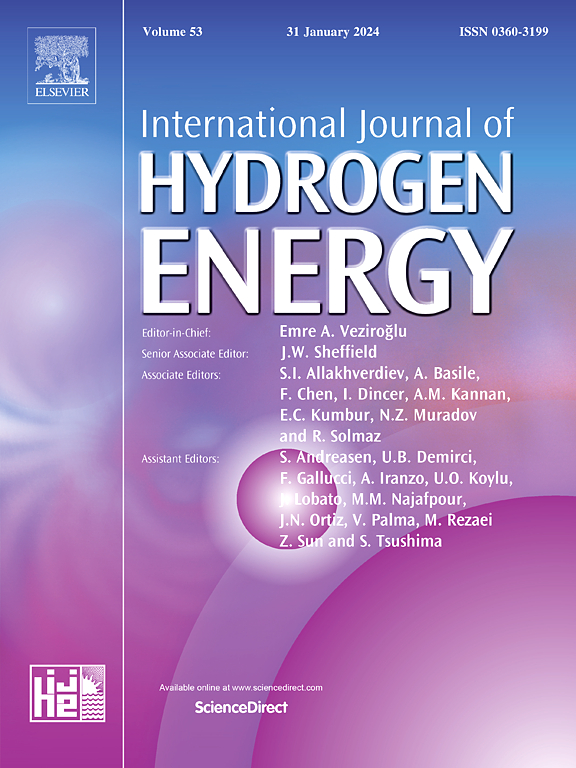Effect of electrochemical cathodic hydrogen charging on the surface film of an ultralight Mg–Li–Zn alloy
IF 8.3
2区 工程技术
Q1 CHEMISTRY, PHYSICAL
引用次数: 0
Abstract
Effect of electrochemical cathodic hydrogen charging on the microstructure and surface films of Mg–11Li-xZn alloys (x = 0, 1, 3, 6 wt%, designated as L11, LZ111, LZ113, LZ116) were investigated in this work. The results demonstrated that hydrogen charging induced the formation of a dual-layered corrosion product film on the alloys. The outer layer was primarily composed of lithium-compounds (Li2CO3, LiOH·H2O, Li2O), while the inner layer was mainly composed of magnesium compounds (Mg(OH)2, MgCO3, MgO, and MgH2), with a higher MgH2 concentration in the alloys with lower Zn content. As the Zn content increased, the overall thickness of the corrosion product film significantly decreases, particularly when Zn reached 1 wt%, which was ascribed to the suppressed formation of MgH2. Additionally, hydrogen charging induced varying hydrogen damage of the four alloys. The L11 alloy with no Zn exhibited surface bulging and cracking due to extensive MgH2 formation after hydrogen charging. The LZ111 alloy with minimal Zn content displayed the lowest hydrogen concentration, characterized by fewer hydrogen-induced microcracks. This was attributed to its denser surface film and fewer secondary phases. With further increasing Zn content, intergranular cracking occurred at the grain boundaries of the LZ113 and LZ116 alloys, primarily due to the precipitation of secondary phases and thinner surface films. The excessive precipitation of secondary phases acted as hydrogen traps, elevating hydrogen levels at the grain boundaries. Concurrently, the thinner surface films of the alloy with high Zn content reduced the resistance to the hydrogen permeation.
电化学阴极充氢对超轻镁锂锌合金表面膜的影响
研究了电化学阴极充氢对Mg-11Li-xZn合金(x = 0、1、3、6 wt%,分别为L11、LZ111、LZ113、LZ116)微观组织和表面膜的影响。结果表明,充氢诱导合金表面形成双层腐蚀产物膜。外层主要由锂化合物(Li2CO3、LiOH·H2O、Li2O)组成,内层主要由镁化合物(Mg(OH)2、MgCO3、MgO、MgH2)组成,且锌含量越低,合金中MgH2浓度越高。随着Zn含量的增加,腐蚀产物膜的总厚度显著减小,特别是当Zn达到1 wt%时,这是由于抑制了MgH2的形成。此外,充氢对四种合金产生了不同程度的氢损伤。未加Zn的L11合金由于充氢后大量生成MgH2,表面出现胀形和开裂现象。锌含量最低的LZ111合金氢浓度最低,氢致微裂纹较少。这是由于其表面膜较致密,二次相较少。随着Zn含量的进一步增加,LZ113和LZ116合金晶界处出现了晶间裂纹,主要是由于二次相的析出和表面膜的变薄。二次相的过量析出起到了氢阱的作用,提高了晶界处的氢含量。同时,高锌合金的表面膜越薄,其抗氢渗透能力越弱。
本文章由计算机程序翻译,如有差异,请以英文原文为准。
求助全文
约1分钟内获得全文
求助全文
来源期刊

International Journal of Hydrogen Energy
工程技术-环境科学
CiteScore
13.50
自引率
25.00%
发文量
3502
审稿时长
60 days
期刊介绍:
The objective of the International Journal of Hydrogen Energy is to facilitate the exchange of new ideas, technological advancements, and research findings in the field of Hydrogen Energy among scientists and engineers worldwide. This journal showcases original research, both analytical and experimental, covering various aspects of Hydrogen Energy. These include production, storage, transmission, utilization, enabling technologies, environmental impact, economic considerations, and global perspectives on hydrogen and its carriers such as NH3, CH4, alcohols, etc.
The utilization aspect encompasses various methods such as thermochemical (combustion), photochemical, electrochemical (fuel cells), and nuclear conversion of hydrogen, hydrogen isotopes, and hydrogen carriers into thermal, mechanical, and electrical energies. The applications of these energies can be found in transportation (including aerospace), industrial, commercial, and residential sectors.
 求助内容:
求助内容: 应助结果提醒方式:
应助结果提醒方式:


